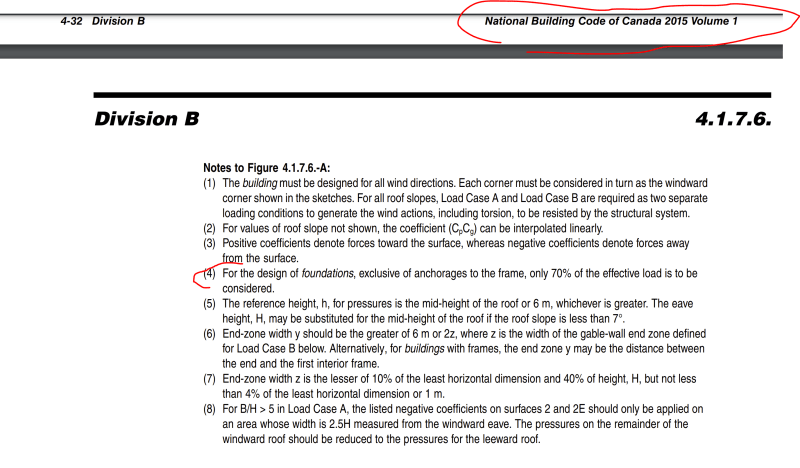palk7 EIT
Structural
- May 12, 2020
- 159
Hi,
For the foundation bearing pressure checks in NBCC for Wind loads I see the SLS importance factor as 0.75. So when checking the footings can I apply this reduction factor of 0.75 For Wind. So one of the load combo will be D+0.75W.
In ASCE it makes sense with ASD load combinations as they reduce the wind by 0.6 D+0.6W combo.
Any advice on this.
Thank you
For the foundation bearing pressure checks in NBCC for Wind loads I see the SLS importance factor as 0.75. So when checking the footings can I apply this reduction factor of 0.75 For Wind. So one of the load combo will be D+0.75W.
In ASCE it makes sense with ASD load combinations as they reduce the wind by 0.6 D+0.6W combo.
Any advice on this.
Thank you

